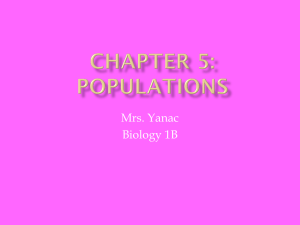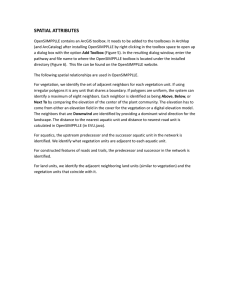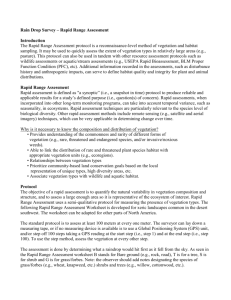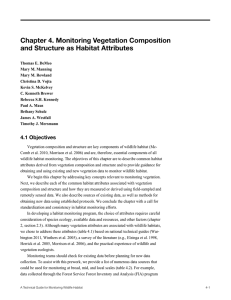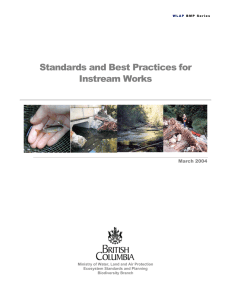Aquatic Habitats Advantages of adequate vegetation cover
advertisement
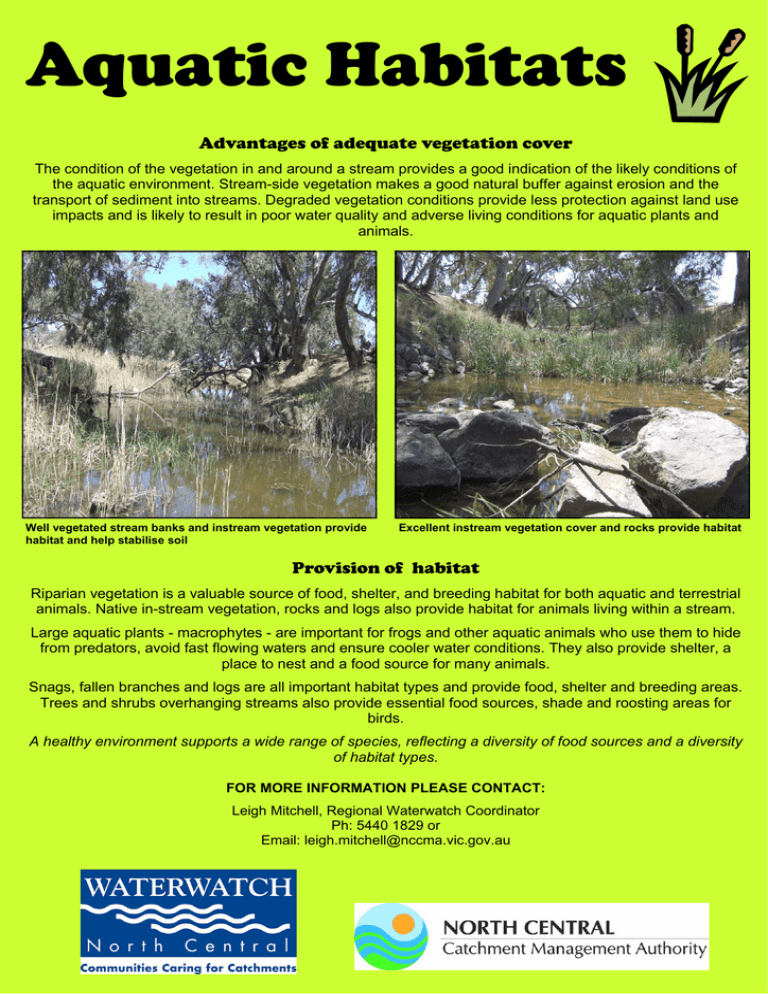
Aquatic Habitats Advantages of adequate vegetation cover The condition of the vegetation in and around a stream provides a good indication of the likely conditions of the aquatic environment. Stream-side vegetation makes a good natural buffer against erosion and the transport of sediment into streams. Degraded vegetation conditions provide less protection against land use impacts and is likely to result in poor water quality and adverse living conditions for aquatic plants and animals. Well vegetated stream banks and instream vegetation provide habitat and help stabilise soil Excellent instream vegetation cover and rocks provide habitat Provision of habitat Riparian vegetation is a valuable source of food, shelter, and breeding habitat for both aquatic and terrestrial animals. Native in-stream vegetation, rocks and logs also provide habitat for animals living within a stream. Large aquatic plants - macrophytes - are important for frogs and other aquatic animals who use them to hide from predators, avoid fast flowing waters and ensure cooler water conditions. They also provide shelter, a place to nest and a food source for many animals. Snags, fallen branches and logs are all important habitat types and provide food, shelter and breeding areas. Trees and shrubs overhanging streams also provide essential food sources, shade and roosting areas for birds. A healthy environment supports a wide range of species, reflecting a diversity of food sources and a diversity of habitat types. FOR MORE INFORMATION PLEASE CONTACT: Leigh Mitchell, Regional Waterwatch Coordinator Ph: 5440 1829 or Email: leigh.mitchell@nccma.vic.gov.au

